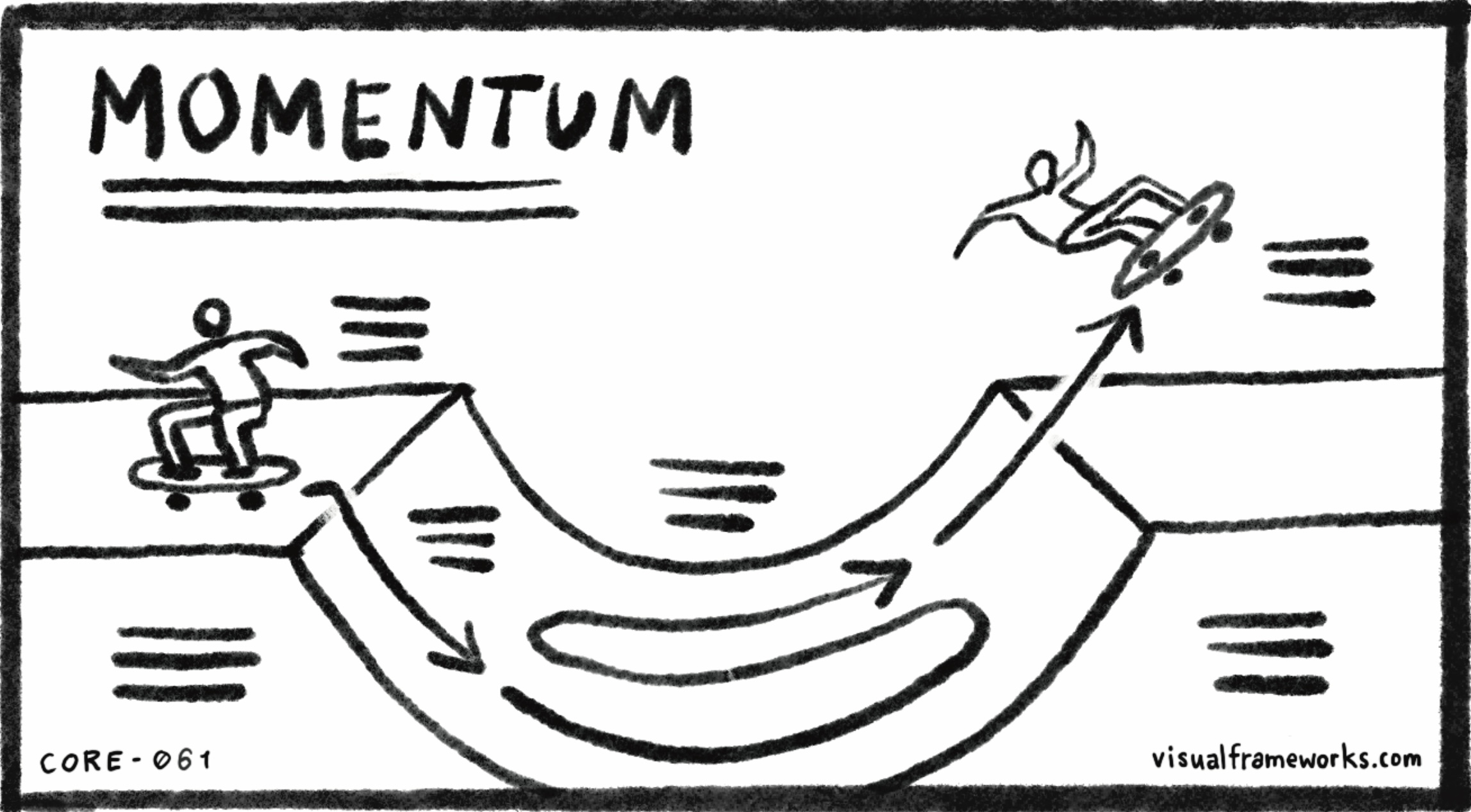Momentum is a word for “body in motion.” Momentum is a product of mass and speed, that is, how much stuff and how fast it is moving. A large object moving slowly, like a truck, can have the same momentum as a small object moving fast, like a bullet.
An object’s momentum is equal to the force needed to stop it.
Anything that’s moving has momentum. A company, a project, a process, a relationship. The bigger it is, and the longer it’s been in motion, the harder it is to stop it or change direction.
A 20-year relationship, with all its embedded habits and routines, is harder to stop or shift to a new direction than a brand new one. A large company with thousands of employees can have the momentum of an oil tanker, while a startup with 20 people might be as agile as a sailboat.
When starting something new, momentum is low. The smaller it is, the easier it will be to get it going. The bigger it is, the harder it is to move, at first. Likewise, when something big is moving fast, it’s equally hard to stop it.
Do you need to start something, stop something, or change its direction? How big is it? How long has it been moving? How much, how fast? How much force will it require to make the change?
See also: Flywheel, Pendulum, Escape velocity, Solar system, Impact, Tipping point, Snowball effect, Uphill climb.
CORE-61
The idea for this visual framework came from Daniel Gray.
